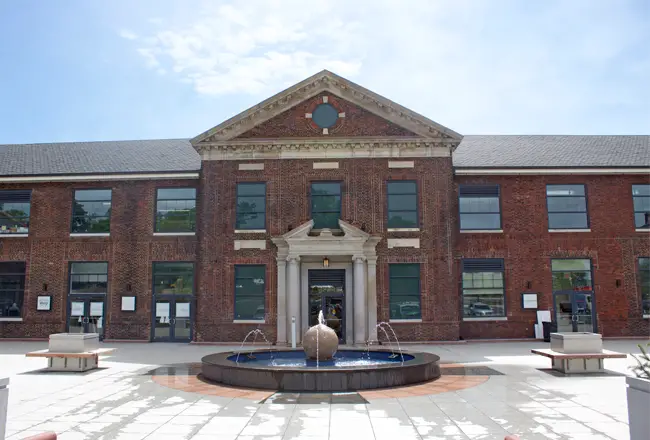Speaking to a crowd of real estate professionals, architect John Sullivan said Westchester County’s cities already have much of what a modern community should strive for.
“We”™re so blessed here,” said Sullivan, president of White Plains-based Sullivan Architecture PC. “White Plains, Yonkers, Mount Vernon, Peekskill, they all have trains that traverse (New York City), all can be and are walkable communities.”
How to build off those advantages, especially through reuse of old buildings, was a focus of a May 18 real estate summit hosted by the Westchester County Association at the Westchester Marriott in Tarrytown.
“We”™re looking at reuse opportunities in every sector,” said Guy Leibler, president of Simone Healthcare Development.
As one example, Leibler said the struggling retail sector could open up potential reuse opportunities for malls, including conversion to health care facilities.
“I”™m not against new buildings,” Leibler said. “But we believe that bricks and mortar have a value, and why not use them?”
Both Leibler and Sullivan have led or designed recent major reuse projects in the county.

Leibler’s Simone Development Cos. this month will ceremonially open a $35 million redevelopment of the Boyce Thompson Center in Yonkers, where eateries and retail tenants such as Fortina, Starbucks and The Taco Project have leased space along with health care providers, including Westmed Medical Group and St. John’s Hospital in the 85,000-square-foot complex, a former plant science research center that stood vacant for about 40 years.
Sullivan’s firm designed the $35 million mixed-use redevelopment of The Esplanade in White Plains, a senior-citizen residence, into 212 luxury apartments and street-level retail and restaurant space.
Leibler said redevelopment projects such as Boyce Thompson have been helped by a shift in thinking by municipal planners. “The whole mentality has changed from thinking about the building and the zone to thinking about people and what”™s good for the future of the community,” he said.
That shift was evident in the summit”™s second panel, which featured planning officials for the town of Harrison and city of White Plains.
Christopher Gomez, the White Plains planning commissioner, discussed how the city was able to utilize a million-dollar state grant to study uses for the area around its Metro-North train station. The city finalized a strategic plan last year after a series of community forums and online questionnaires.
As part of that plan, White Plains will release a request for interest from developers for 4.5 acres it controls around the station that it would like to see redeveloped as envisioned in the plan.
A similarly collaborative effort was required in Harrison to address underutilized office buildings, and a resulting drop in business property tax revenue, along its Platinum Mile corridor on Interstate 287. Thomas Heaslip, chairman of the Harrison Planning Board, described how the town reworked its master plan and zoning to allow new commercial and residential uses for an area once lined with corporate headquarters.
During that process, he said, the town held a summit for developers, land-use attorneys and property owners. The message was, “We would like to work with you folks, and we can deal with zoning… Come in and talk with us.”
Since the town”™s new master plan was approved in 2013, Harrison has attracted major investments to old office properties. Heaslip cited the $50 million Life Time Fitness center on the former site of Gannett’s Journal News headquarters and printing plant, along with Memorial Sloan Kettering”™s construction of an outpatient cancer facility in the former Verizon research building at 500 Westchester Ave.
There”™s more to come. Heaslip noted the pending proposal for the county”™s first Wegmans supermarket, which would be built in place of three largely empty office buildings owned by Normandy Real Estate Partners on Corporate Park Drive.
“It”™s been a real great ride for the past five or six years,” Heaslip said. “And it serves as an example for what all of Westchester can do if they had that kind of cooperation.”






















